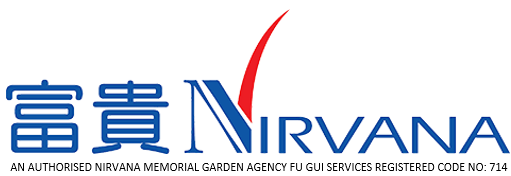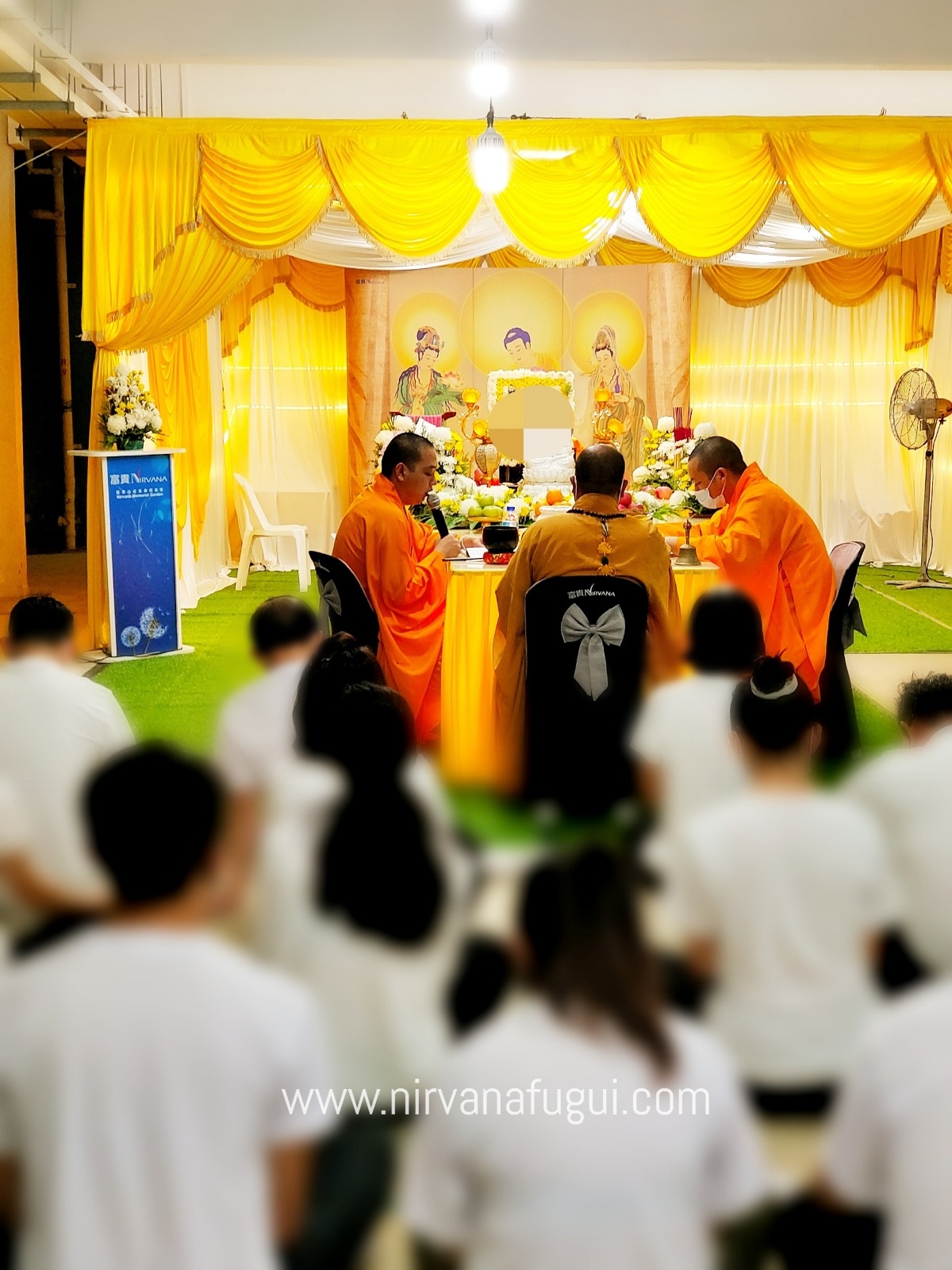Like any other type of funeral, attending Buddhist funerals are solemn and dignified events to mourn and pay respect to the newly departed. For most foreign expats in Singapore, attending a Buddhist funeral can be something new in terms of cultural beliefs and perspectives.
In this article, we are going to share with you the 12 etiquette or the dos and don’ts when attending a Buddhist funeral wake in Singapore.
1. Pay your Respects at the Altar at the Funeral Wake
The first thing that you need to do when you arrive at a Buddhist funeral is to show your respect at the altar. You can take a joss stick, light it, give a bow to the deceased, and then place the joss sticks onto the holder. If you are not comfortable with the joss sticks, it is okay to give a slight bow to the departed. The host (usually the deceased’s family member whom you know), will return a bow back to you. After which, you can proceed to have a seat. Usually in the evening when there is a funeral prayer ceremony going on, you need not to go to the altar. Just proceed to any of the seats that is available.
2. When Interacting with the Deceased’s Family Members at the Funeral Wake
Once you are seated, you might have the opportunity to speak with one of the deceased’s family members. Try to avoid saying offensive or insensitive words that may hurt their feelings. A common taboo that a funeral guest might say is what is the cause of the departed’s death? Usually, we try not to start a conversation in this way unless the host opens that conversation.
Show empathy to the host. Say things that ‘I am sorry for your loss, please take care of yourself and your family.’ Do not laugh or joke too loud at your table, as this may show disrespect to the departed and the family members.
3. Choose Your Attire Carefully When Visiting a Buddhist Funeral
Muted colours like white, black, dark green, dark blue, or grey are appropriate colours of clothing attire in a Chinese funeral. Do not wear bright coloured shirts or pants such as red, yellow, light green, orange, or shirts with ostentatious designs and colours.
These colours represent a disrespect to the family members who are at the grieving stage, and a disrespect to the newly departed. In terms of shoe-wear, put on covered shoes. Do not wear slippers or sandals. It is a taboo as wearing slippers at a funeral means you are ‘dragging’ bad luck into your life. Moreover, never wear sunglasses or a cap to a funeral.
Men should wear something that is considered casually formal; a polo tee will be the best possible attire. If you do not have a polo tee, a muted colour tee shirt will be just fine. Do not wear shorts or Bermuda pants at a funeral. Wear long pants or trousers that cover beyond your kneecap area. For the ladies, try to avoid attire that is too revealing. No low-cut blouse and no miniskirts.
By wearing attire that is too revealing in a Buddhist funeral, it shows disrespect to the deceased. Therefore, if you are planning to attend a Buddhist funeral after work in the evening; be sure to wear the appropriate attire to work in the morning.
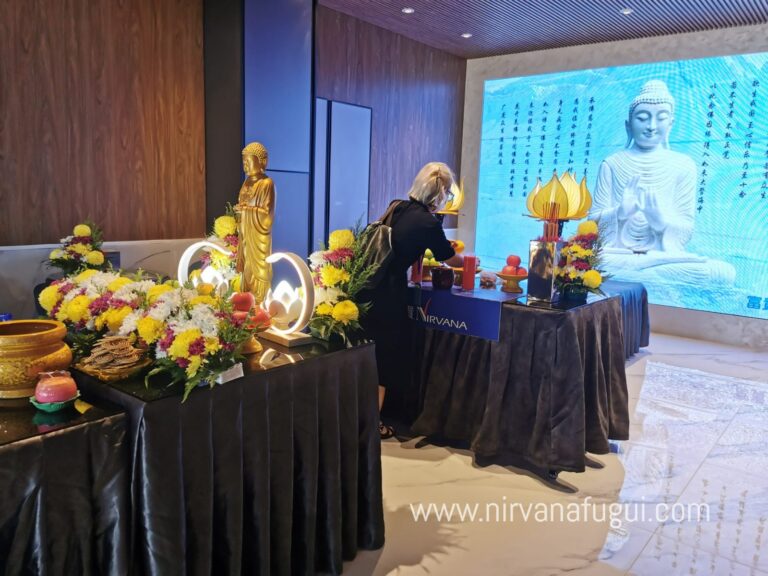
4. During the Buddhist Funeral Rite
Usually, the funeral rite is in the evening from 8pm to around 930pm, with breaks in between. The ceremony at the last night will be led by a senior priest. The sutra that is recited during the rite is the protection sutra. It is meant to protect the soul of the departed on their journey to rebirth. The senior priest will lead the family members, usually the deceased’s children, grandchildren, or younger relatives and siblings of the deceased, in the ceremony.
It is okay not to participate in the ceremony. You can just sit at your table and observe the ceremony. However, it is not okay to leave when the ceremony is ongoing. Just wait patiently for the break time or the end of the ceremony; and let the host know that you are leaving.
5. The Red String that you will usually see at a Chinese Funeral
The red string is a symbol of blessing the departed and the family members wish to give to you; to thank you for attending the funeral. What you need to do, is to coil the red string on any of your fingers. When you leave the funeral, you can simply discard it away. This action will help you to shed off any bad luck.
6. Flower Wreaths at a Buddhist Funeral
To express your condolences to the deceased’s family, you can order and send a flower wreath to the funeral address. Flower wreaths help to offer a sense of comfort and emotional support to the grieving family. Never send a flower wreath on the day after the funeral ceremony.
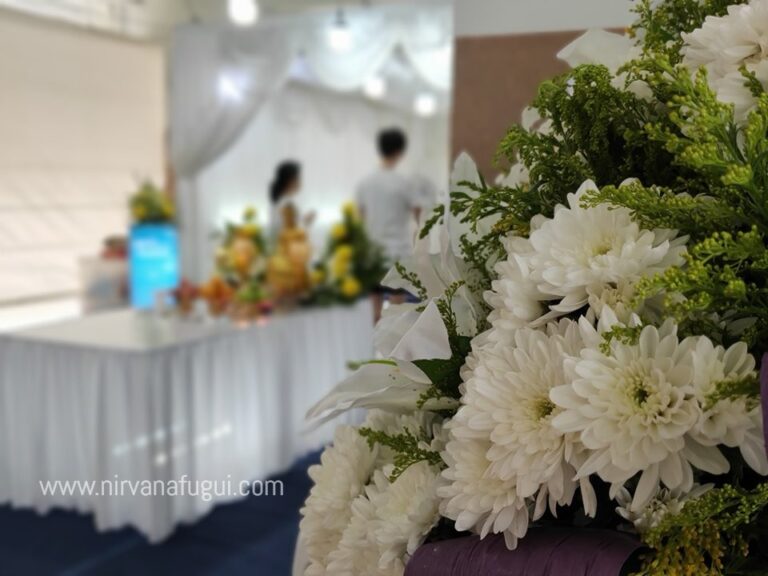
7. Condolences Money at a Buddhist Funeral
It is advisable to offer condolences money, also known as bai jin (白金) to the deceased family. The main reason is for them to cover the funeral expenses as well as other expenses that they may incur. There is no fixed rate or market rate when it comes to condolences money. Just offer any amount that you feel appropriate and comfortable to your budget.
8. Cleansing with Blessed Water When Leaving a Buddhist Funeral
You may also notice a pail of ‘flower’ water at the exit of the Buddhist funeral. The water helps to cleanse the body of any bad luck. To do that, just pour a little bit of the blessed water onto your hands and rub it.
9. Never Say See You Soon; or Goodbye in Chinese.
When leaving a Buddhist funeral, it is not advisable to say ‘see you soon; or goodbye in Chinese (再见). This means that you will see the deceased again. You can simply just let the host know that you are leaving and that is it.
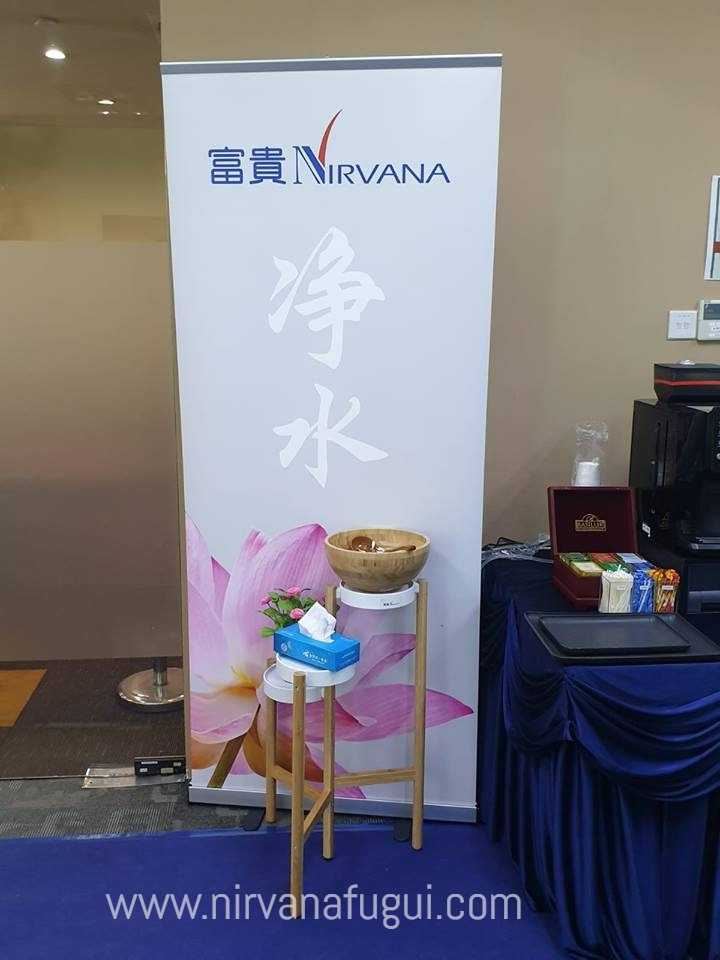
10. Do Not Look When The Casket is Closing
On the last day of the funeral, the friends and relatives will be invited to walk around the casket to say goodbye to the deceased for the last time. After which the casket will be closed and sealed. The funeral director will advise the attendees not to look at the casket when the undertakers are closing it. This is because it might mean that the soul is unable to depart when someone is looking at it.
11. Funeral Procession – Escorting the Hearse
After the casket has been sealed and lifted onto the hearse. The family members and friends will then follow the hearse on foot or by car for a few minutes on the road. After which, the attendees without vehicles will take the shuttle bus to the crematorium.
*Do note that due to COVID-19 restrictions, escorting the hearse is temporarily restricted until further notice.
12. The Send-Off Prayer Ritual at the Crematorium
At the crematorium, the priest will do a short prayer ritual to send off the deceased. Just like point number 4, you can simply sit on one side and observe the ritual. After the short ritual, the attendees will be escorted to the viewing platform; to send off the departed for one last time.
So there you have, the 12 etiquettes when attending a Buddhist funeral wake.

About Nirvana Singapore
At Nirvana Singapore, we believe in providing a comfortable and conducive environment for individuals to pay their respect to their departed loved ones.
